
The Three Gorges of the Yangtze, Chongqing.
Part 14. Other Places
China is not a country that can be explored on one trip, no matter how long. Some areas have to be visited repeatedly in different seasons. Old places of interest disappear or get screwed up by muss tourism; new ones pop up or become a bit more accessible.
 |
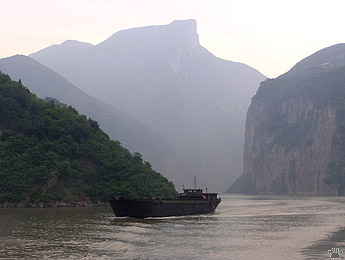 |
| The Three Gorges of the Yangtze, Chongqing. |

Butterfly nets on long poles are used for riverside trade during brief
stopovers. The Three Gorges. |
One famous place that is being drastically changed is the Three Gorges of the Yangtze River, now in process of being flooded by the colossal Three Gorges Dam in Hubei. They'll still make an interesting river trip, but far less spectacular than before. |

Riverside temple, Spring and Autumn Period (770-476 BC), restored
during Ming Dynasty (1368-1644). The Three Gorges. |
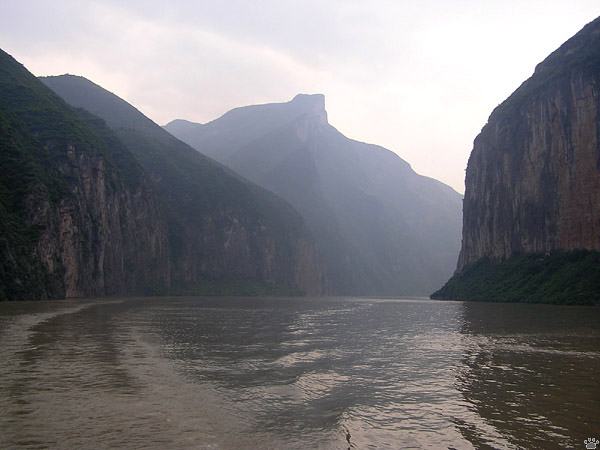
The Three Gorges of the Yangtze, Chongqing. |

Mountain bamboo-partridge (Bambusicola fytchii), Chongqing. |
The new dam forced the displacement of over a million people, and caused further deterioration of the entire Yangtze floodplain downstream.
|
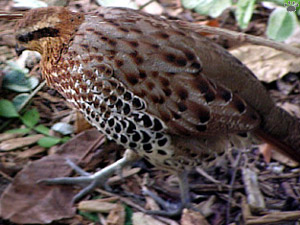
Mountain bamboo-partridge, Chongqing. |
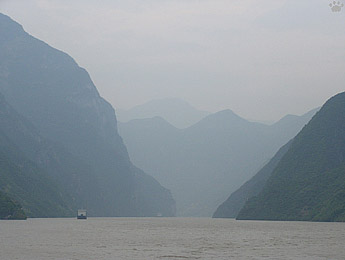 |
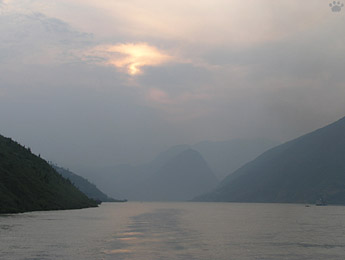 |
| The Three Gorges of the Yangtze, Chongqing. |

Mekong River on Yunnan-Tibet border, 1993. |
One area where travel is getting a bit more interesting is the Four Rivers Country on the border of Yunnan and Tibet. China has banned all logging there, started massive reforestation, and is building better roads. Travel restrictions are becoming much more relaxed there. |

Stone Forest, Yunnan, 1993. |

Mekong River on Yunnan-Tibet border, 1993. |
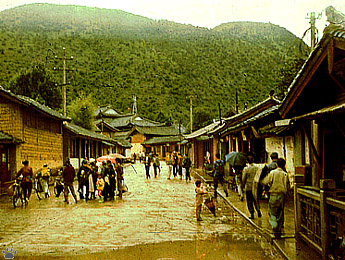
City of Lijang, Yunnan, 1993. |
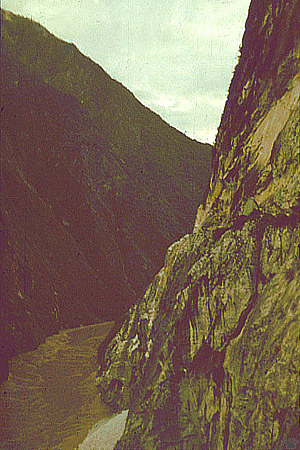
Tiger's Leap Gorge of the Yangtze, Yunnan, 1993. |
As for other parts of Yunnan, they are now on the major tourist circuit. The Tiger's Leap Gorge of the Yangtze and the city of Lijang were remote and pristine just a decade ago, but now they are so changed by all the tourism- oriented development that visiting them is a waste of time. |

Tiger's Leap Gorge of the Yangtze, Yunnan, 1993. |
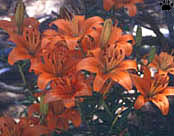 |
 |
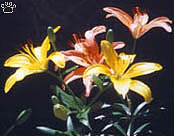 |
| Some of Chinese flowers,
such as few of 150 local lily (Lilium) species, are now widely grown in
the West, while others, like Himalayan blue poppy (Meconopsis) are known
mostly to botanists. Yunnan, 1993. |
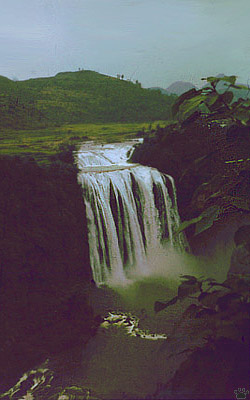
Huangguoshi Waterfall, Guizhou, 1993. |
The Four River Country, with its deep tropical canyons and heavily glaciated peaks, is probably the most biologically diverse part of China, but other places in the south are also worth exploring. |
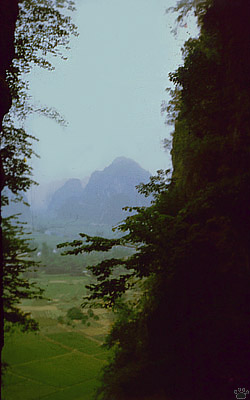
View from a cave, Yongshuo, Guangxi, 1993.
|
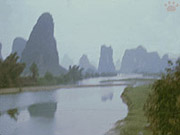 |
| Karst near Yongshuo, Guangxi, 1993. |
| Tropical rainforests of Xishuanbanna, Yunnan, karst country around Guilin, Guangxi, mountain ranges of Hunan and the island of Hainan are particularly interesting. |
 |
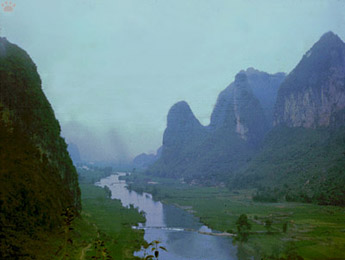 |
| Tropical karst near Yongshuo, Guangxi, 1993. |

Summer palace of Manchu emperors, Shenyang. 1993. |
The three Manchurian provinces in the far northeastern China don't see that many tourists. There are two very interesting Nature reserves there (Changbeishan in Jilin and Zhalong Crane Reserve in Heilongjiang), but mostly it's just a very civilized and developed version of Siberia. |

Summer palace, c. 1624, Shenyang, Liaoning. 1993. |
 |
 |
| Summer palace of Manchu emperors, c. 1624, Shenyang, Liaoning. 1993. |
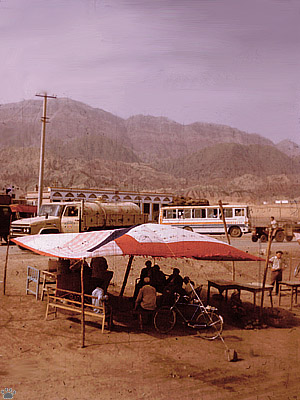
Caravan-sarai (hotel) at the foot of Tien Shan Mountains,
Taklamakan Desert, Xinjiang
, 1993. |
The deserts of Nei Mongol (Inner Mongolia) and Xinjiang are a much less pleasant country to travel. Distances are great, and interesting sites are separated by hundreds of miles of lifeless nothing. But this land has its own beauty, too. |
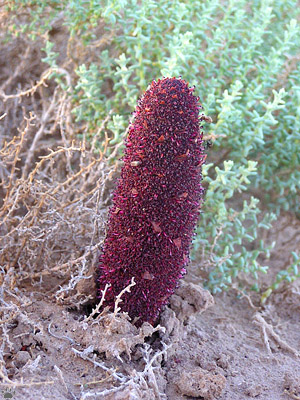
Parasitic plant (Cynomorium coccineum),
Alashan Gobi, Inner Mongolia. |

Morning in Alashan Gobi, Nei Mongol. |
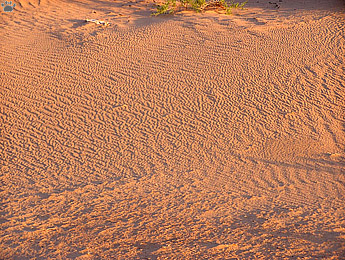
Patterns of sand, Gaxun Gobi, Nei Mongol. |

Mongolian ground-jay
(Podoces hendersoni),
Alashan Gobi, N. Mong. |
Chinese deserts are not like those of Mongolia or Turkestan. You seldom see fields of broken rock so common in Mongolian Gobi, and there are no saxaul forests like those in Turkmenia. Riparian forests have all been cut, and large animals are mostly gone, except along the Mongolian border and in the Wild Camel Reserve near the former lake Lop Nuur (Lobnor). Sand dunes are the most common landscape in Taklamakan and Chinese Gobi. Junggar Desert was once a dry grassland, but has been turned into dead wasteland by overgrazing. |

Tracks of Mongolian
ground-jay, Alashan
Gobi, Nei Mongol. |

Desert mountains near the border with "outer" Mongolia, Nei Mongol. |

Tang Dynasty (AD 618-907) frescoes, Mogao Caves, Gansu, 1993. |

Mongolian ground-jay
(Oenanthe pleshanka),
Alashan Gobi, N. Mong. |
If you are looking for desert birds, lizards, and small mammals such as jerboas, deserts of China are probably a better choice than Mongolian Gobi, because paved roads cross them in all directions. There are also some historic monuments, including Mogao Caves near Dunhuang in Gansu - the best of the three great Buddhist cave complexes of China.
There are, of course, many interesting places in China not mentioned in these pages. I hope to see some of them in the future, and to add photos here.
|
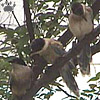
Azure-winged magpies
(Cyanopica cyana),
Xiahe, Qinghai. |

Desert sunset, Gaxun Gobi, Gansu/Nei Mongol border.
Back to Part 13
Home
|